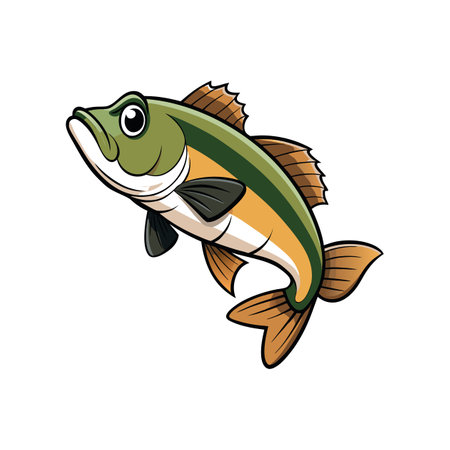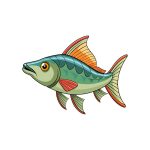1. Choosing the Right Destination
Planning your first overseas fishing trip starts with picking the right spot. The destination you choose will shape your entire experience, from the type of fish you’ll catch to the kind of gear you’ll need. Here’s how to narrow down your options and find a location that fits your fishing dreams.
Know What You Want to Catch
Start by thinking about what kind of fish youre excited to reel in. Are you after big game like marlin or tuna? Or do you prefer freshwater species like trout or bass? Different countries and regions are known for different types of fishing, so identifying your target species helps narrow your search quickly.
Popular Fishing Destinations by Target Species
| Target Species | Top Destinations |
|---|---|
| Marlin | Cabo San Lucas (Mexico), Kona (Hawaii), Cairns (Australia) |
| Tuna | Madeira (Portugal), Prince Edward Island (Canada), Seychelles |
| Trout | New Zealand, Patagonia (Argentina), Montana (USA) |
| Pike & Walleye | Canada, Sweden, Finland |
Think About Climate and Season
The best time to fish in a region depends on local weather patterns and fish migration. Research the peak fishing seasons for your desired species and make sure they match up with your travel plans. For example, if youre planning a winter trip, tropical destinations like Costa Rica or the Maldives might be ideal.
Fishing Season Guide by Region
| Region | Best Fishing Months |
|---|---|
| Costa Rica (Sailfish) | December – April |
| Iceland (Atlantic Salmon) | June – August |
| Seychelles (GTs & Tuna) | October – May |
Check Travel Accessibility
A dream fishing spot isnt much good if it’s a nightmare to get to. Look into flight availability, travel time, visa requirements, and how far youll have to travel once you land. Some remote lodges may require additional boat rides or bush plane flights—factor that into both your budget and schedule.
Understand Local Regulations
Every country has its own fishing rules. These can include permit requirements, catch-and-release laws, size limits, and protected areas. Be sure to check with local authorities or reputable charter services before you go. Not following these rules could result in fines or even having your gear confiscated.
Quick Tips:
- Always get the proper fishing licenses or permits.
- Ask if there are seasonal closures or protected species.
- If hiring a guide or charter, confirm theyre licensed and experienced.
Selecting the right destination is all about balancing your personal fishing goals with practical considerations like weather, travel ease, and local laws. Take the time to do your homework now so you can enjoy smooth sailing—and reeling—later on.
Understanding Visa and Travel Requirements
Before you pack your tackle box and head to the airport, its crucial to understand the visa and travel requirements for your destination. Each country has its own rules, especially when it comes to anglers traveling with fishing gear or bringing in specialized equipment.
Check Entry Requirements for Your Destination
The first step is to check if you need a visa to enter the country youre planning to fish in. Some countries allow U.S. citizens to enter visa-free for tourism, while others may require a tourist visa or even a special permit for fishing activities.
Common Visa Categories for Anglers
| Visa Type | Description | When You Need It |
|---|---|---|
| Tourist Visa | Standard visa for leisure travel, including recreational fishing | If your destination doesnt offer visa-free entry to U.S. citizens |
| Fishing Permit | Special authorization required by some countries or regions for fishing | If youre fishing in protected waters or targeting specific species |
| Cultural/Adventure Tourism Visa | A visa that covers specific activities like eco-tourism or adventure sports | If your trip includes guided tours or chartered fishing expeditions |
Traveling with Fishing Gear: What You Need to Know
Transporting rods, reels, lures, and other gear internationally can be tricky. Some items may be subject to inspection or even restricted depending on the country. Make sure to:
- Declare all your equipment at customs upon arrival and departure.
- Avoid carrying live bait, organic materials, or items made from endangered species (like certain types of feathers or bone handles).
- Use hard cases for rods and reels to protect them during flights.
- Check airline policies on oversized luggage and sporting equipment fees.
Certain Equipment May Require Special Clearance
If youre bringing electronics like fish finders or drones, double-check whether these are allowed in your destination country. Some places have restrictions on wireless devices or require registration before use.
TSA Tips for Anglers Flying Internationally
- Packing: Keep sharp objects like hooks in checked baggage.
- Batteries: Lithium batteries must be packed according to airline guidelines.
- Chemicals: Avoid carrying flammable liquids like fuel for portable stoves unless permitted.
- Luggage Tags: Clearly label all bags and gear cases with your contact info.
A Little Prep Goes a Long Way
The best way to avoid surprises is to research early and reach out to the countrys embassy or consulate if youre unsure about anything. Travel agents who specialize in fishing trips can also help you navigate complex entry requirements and ensure you have all the right paperwork lined up before your journey begins.
This extra bit of planning will save you time at customs and keep your focus where it should be—on landing that trophy catch!
![]()
3. Packing the Right Gear
When youre heading overseas for your first fishing trip, packing the right gear can make or break your experience. It’s not just about what to bring, but how to pack it so everything arrives safely and complies with airline rules. From rods and reels to clothing and tackle, heres what you need to know.
Fishing Gear Essentials
Your gear list may vary depending on your destination and target species, but here are the basics most anglers will need:
| Item | Description | Packing Tip |
|---|---|---|
| Rods | 2-3 travel-friendly rods (spinning or casting) | Use a hard rod tube; check airline length restrictions |
| Reels | At least one backup reel | Remove line if flying; pack in carry-on if allowed |
| Tackle | Lures, hooks, leaders, weights specific to your target species | Pack sharp items in checked baggage only |
| Line | Braided and mono lines in various test strengths | Avoid spools over 300 yards to save space |
| Pliers/Tools | Split ring pliers, hook removers, line cutters | Packing in checked luggage is safest |
| Tackle Box/Bag | Compact and organized box or soft tackle bag | Select waterproof bags for extra protection |
Dressing for the Destination
Your clothing should match both the weather and fishing conditions. Heres a quick checklist:
- Quick-dry shirts & pants: Lightweight and breathable for hot climates.
- Rain gear: Waterproof jacket and pants for unexpected weather.
- Shoes: Non-slip boat shoes or wading boots as needed.
- Sunglasses: Polarized lenses help reduce glare on water.
- Sunscreen & hat: Protect yourself from sun exposure all day long.
- Buff or face shield: Keeps sun and wind off your face and neck.
Navigating Airline Rules with Fishing Gear
A big part of traveling with fishing equipment is making sure youre within airline guidelines. Here are some tips to keep things smooth at the airport:
Packing Rods and Reels Safely
- If possible, use a multi-piece travel rod that fits in standard luggage.
- A hard-sided rod case is best for checked baggage; some airlines allow it as a special item.
- Padded reel cases help prevent damage—consider carrying reels in your carry-on if TSA allows.
Tackle and Tools Tips
- No sharp objects like hooks or knives in your carry-on—these must go in checked luggage.
- If youre bringing liquids (like reel oil), follow the TSA liquid rule: 3.4 oz max per container, in a quart-size ziplock bag.
- Avoid overpacking tackle; bring only what youll realistically use based on your guides advice or local conditions.
Helpful Accessories Worth Bringing Along
A few extra items can make your trip more comfortable and organized:
- Tackle backpack or sling pack: Great for shore fishing or packing light on boats.
- Packing cubes: Keep gear separated by category—clothing, tackle, tools, etc.
- Ziploc bags: Useful for keeping small items dry or organizing terminal tackle.
- Cable ties or Velcro straps: Secure rods together during transport.
- Luggage scale: Avoid overweight baggage fees by weighing at home before heading to the airport.
Packing smart ensures you spend less time worrying about logistics and more time focusing on what matters most—fishing. In the next section, we’ll cover how to choose the right local guides and charters once you arrive at your destination.
4. Booking Guides and Charters
One of the most important steps in planning your first overseas fishing trip is booking a local guide or charter. A good guide can make or break your experience, especially when fishing in unfamiliar waters. Heres how to find the right one and make sure everything goes smoothly.
Do Your Research
Start by searching online for fishing charters in your destination. Use platforms like Google, TripAdvisor, Yelp, or specialized fishing forums. Look for guides with a strong online presence and plenty of recent reviews. Pay attention to comments about reliability, professionalism, equipment quality, and overall experience.
Check Reviews and Ratings
Dont just look at star ratings—read the actual reviews. They often contain valuable insights into what you can expect. Here’s a quick guide on what to watch for:
| What to Check | Why It Matters |
|---|---|
| Recent Reviews | Shows how consistent the service is over time |
| Mention of Equipment | You want well-maintained gear for safety and effectiveness |
| Guides Knowledge | A knowledgeable guide increases your chances of catching fish |
| Customer Service | Friendly, helpful guides lead to a better overall experience |
Ensure Language Compatibility
If youre traveling to a non-English-speaking country, make sure your guide speaks English—or any language youre comfortable with. Miscommunication on the water can be frustrating or even dangerous. Many reputable charters list their language skills on their website or social media pages. If it’s unclear, don’t hesitate to ask before booking.
Book Ahead of Time
The best guides get booked early—sometimes months in advance, especially during peak seasons. Once you’ve found someone who checks all the boxes, lock it in with a deposit if needed. Booking early gives you peace of mind and more options for dates and trip lengths.
Questions to Ask Before Booking:
- What species are in season during my trip?
- Is gear included, or should I bring my own?
- How long is the trip (half-day, full-day)?
- Are licenses or permits included?
- Whats the cancellation policy?
A little preparation goes a long way when booking a fishing charter abroad. Doing your homework ensures that when you hit the water, youre ready for an unforgettable adventure.
5. Respecting Local Culture and Conservation Laws
When youre planning your first overseas fishing trip, its not just about the gear or the fish—its also about being a responsible guest in another country. Understanding and respecting local culture and conservation laws is key to having a great experience and leaving a positive impact.
Understand Local Customs
Every country has its own traditions, beliefs, and ways of life. Something that might seem normal back home could be considered rude or disrespectful elsewhere. Before you go, take some time to learn about:
- Common greetings and polite behavior
- Appropriate dress, especially in rural or traditional communities
- Fishing-related customs (e.g., offering part of your catch to locals)
Showing respect for these customs can help you build good relationships with local guides and communities.
Practice Ethical Catch-and-Release
If youre not planning to keep your catch, practicing proper catch-and-release methods helps protect fish populations. Here are some basic tips:
| Do | Dont |
|---|---|
| Use barbless hooks to reduce injury | Keep the fish out of water too long |
| Wet your hands before handling fish | Squeeze or drop the fish |
| Release the fish gently back into the water | Throw the fish or release it carelessly |
Follow Conservation Regulations
Laws about fishing can vary widely between countries—and even regions within a country. Its your responsibility to know and follow these rules. This includes:
- Fishing seasons (some species have protected times of year)
- Certain areas being off-limits or protected zones
- Size and bag limits on how many fish you can keep
- The types of gear or bait allowed
How to Stay Informed:
- Check official tourism or wildlife websites before your trip
- Ask your local guide or charter captain—they usually know the rules well
- Visit local tackle shops for updates on regulations
The Bigger Picture: Why It Matters
Being respectful of local culture and laws isnt just polite—its essential for preserving fishing spots for future generations. When we take care of the environment and respect the people who live there, we make sure that others can enjoy the same experiences down the road.
Your dream fishing trip should leave behind nothing but good memories—and maybe a few great photos!


